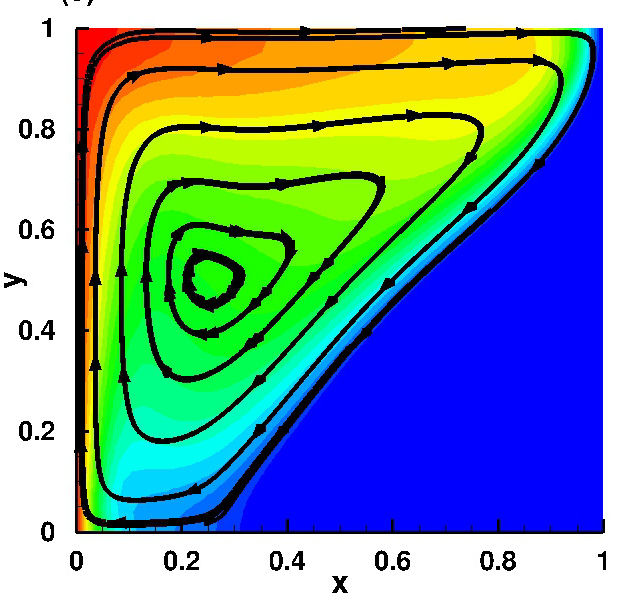Authors
A. Rakotondrandisa, I. Danaila, L. Danaila
Abstract

A high accuracy numerical model is used to simulate an alternate melting and
solidification cycle of a phase change material (PCM). We use a second order (in time and
space) finite-element method with mesh adaptivity to solve a single-domain model based
on the Navier-Stokes-Boussinesq equations. An enthalpy method is applied to the energy
equation. A Carman-Kozeny type penalty term is introduced in the momentum equation
to bring the velocity to zero inside the solid region. The mesh is dynamically adapted
at each time step to accurately capture the interface between solid and liquid phases,
the boundary-layer structure at the walls and the multi-cellular unsteady convection in
the liquid. We consider the basic configuration of a differentially heated square cavity
filled with an octadecane paraffin and use experimental and numerical results from the
literature to validate our numerical system. The first study case considers the complete
melting of the PCM (liquid fraction of 95%), followed by a complete solidification. For
the second case, the solidification is triggered after a partial melting (liquid fraction of
50%). Both cases are analysed in detail by providing temporal evolution of the solid-
liquid interface, liquid fraction, Nusselt number and accumulated heat input. Different
regimes are identified during the melting-solidification process and explained using scaling
correlation analysis. Practical consequences of these two operating modes are finally
discussed.
